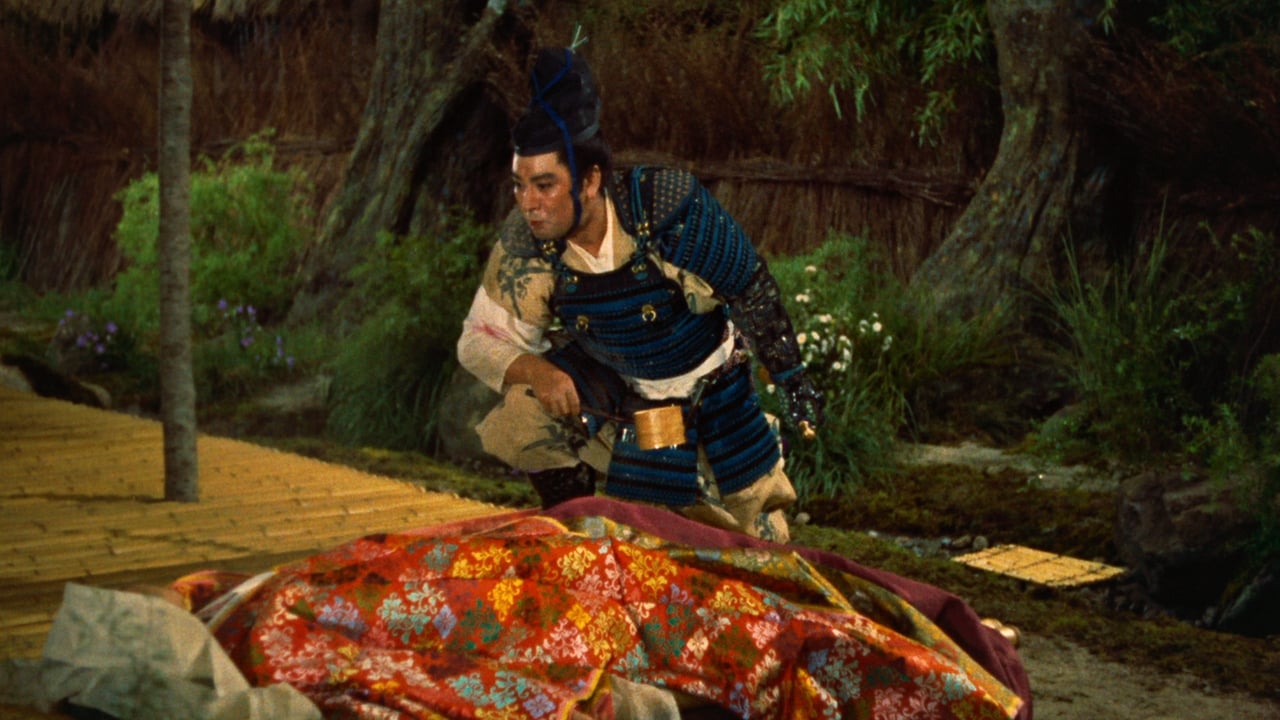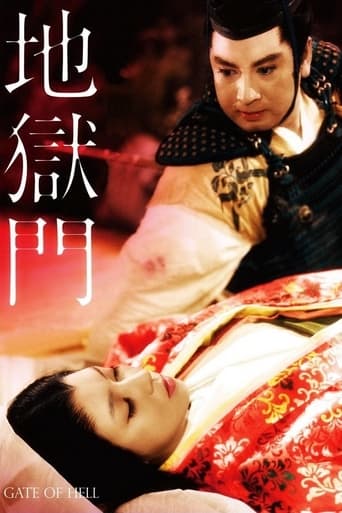

'Gate of Hell' is a story about loyalties. All those who transgress their loyalties, and are beaten or unmasked, are sent to 'Hell' through its 'Gate'. In this movie, the loyalty operates at the social (clan) as well as at the personal level. Rival subjects of the emperor break loyalties by fighting each other for a privileged position at the court. On the other hand, unrestrained passion and sexual harassment of wives of other clan members are also considered as an unacceptable conduct. One of the participants of the yearly 'ceremony of conciliation' among the clans is simply thrown out of the ceremony for his aggressive behavior. Finally, there is also the loyalty of a wife to her husband.Teinosuke Kinugasa's movie shines through its magical mix of color and light, with dark scenes for unrestrained passion and light ones for beauty and self-sacrifice: every frame of every shot is simply a formidable Japanese print. It shines also through the masterful directing and the restraint acting of its main female character. Ultimately, it shines through its treatment of such almighty important themes as the battle between 'good and evil' / 'war and peace' resulting in 'life or death' for its protagonists.While Carl Theodor Dreyer's 'The Passion of Joan of Arc' was a pioneering feature film because of its camera movements and bold focalizing, while Dziga Vertov's 'Man with a Movie Camera' was a pioneering movie because of its brilliant shooting angles, its split screens and its rhythmic 'one by one frame' editing, Teinosuke Kinugasa's 'Gate of Hell' is a pioneering movie because of his magnificent play with light and color, turning it into a grandiose spectacle. He shot an eternal masterpiece. A must see.
... View MoreSome thirty years ago, I was lucky enough to see this film in Paris. We left the theatre well past midnight and we were marvelling at the intensity of the movie. Black and white version, Japanese with subtitles. Uneasy, one would say. Yet, it gave us and still gives me so many years later a wonderful feeling of beauty. Roughly following the script of the French novel 'Princesse of Cleves', it describes the tragedy of being faithful to one's oath. Married and intending to stay true to her husband, the heroine refuses the loving entreaties of the samurai who saved her life. Realizing that she will stay with her husband though she may have only feelings of friendship toward said spouse,the hero decides to 'free' her by killing said husband. Naturally, this being a Stoicism tragedy: The husband discovers belatedly his wife really loves/loved him, the samurai discovers too late that been faithful comes with a price etc etc...It is beauty, pure beauty. Such a change from nowadays ridiculous re-writings like some coming blockbusters.
... View MoreI saw this film when new in 1954 in London, and still remember much of it today. It is a sad and poignant story, beautifully photographed and effectively directed. Costumes and scenery have an authentic air about them. It starts with a battle scene with the young women travelling in a small carriage under threat and in danger. It follows with her life being saved by the heroic action and bravery of a young warrior. He claims her for himself as a reward for his bravery but soon finds that she is already spoken for. Nevertheless he pursues her and insists on what he feels are his rights. This leads to friction in her family and eventually causes the tragedy of her death. It is a lesson in how selfishness can lead to unhappiness in another's life. I feel it is a film not to be missed and would watch it again if it were shown on UK TV. or was available on DVD
... View MoreOver 30 years ago I was a Michigan high school student and the local PBS station held a Japanese film week. The Gate of Hell was my introduction, along with Harikari and the Seven Samurai, to Japanese cinema.I had the opportunity to view the film on TCM recently and, although the story of sacrifice remains just as vivid as I remember, I can't help but notice the film is in desperate need of restoration. This film was noted for its use of color and the colors have faded. Dark areas are missing details, the film element is full of scratches and the sound is uneven. It is perhaps unfortunate that it was filmed on EastmanColor - a film stock not noted for longevity.I will only comment on the plot to point out that you should pay attention to the role of the husband, it is often overlooked. He alone embodies the spirit of a samurai. Lady Watanabe's sacrifice is noble but does her husband no honor, the Lord toys with Moritoh and Lady Kesa a bit too much for his amusement, and Moritoh realizes too late that he is of course simply a fool.Do see this film it you have a chance.
... View More